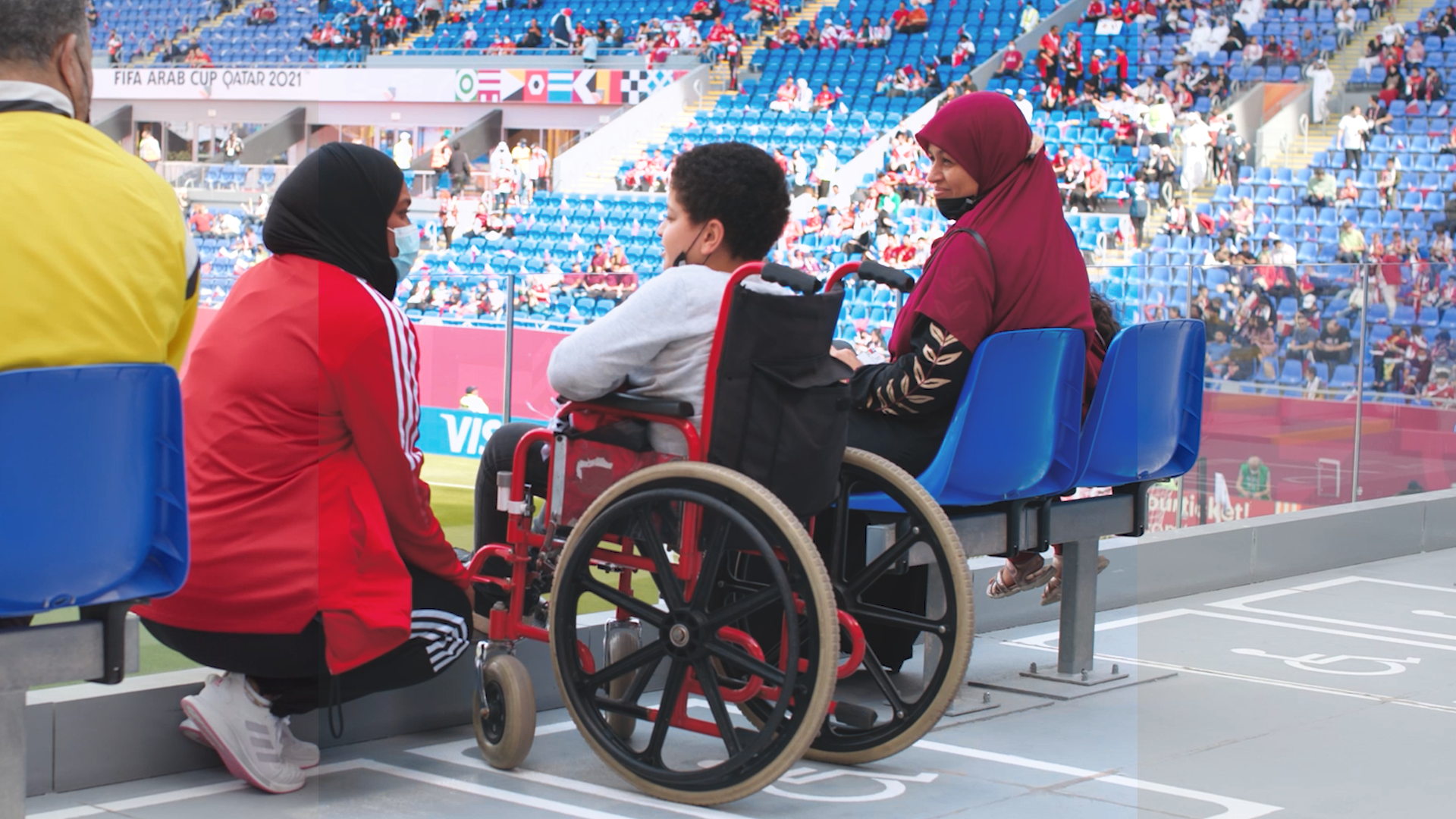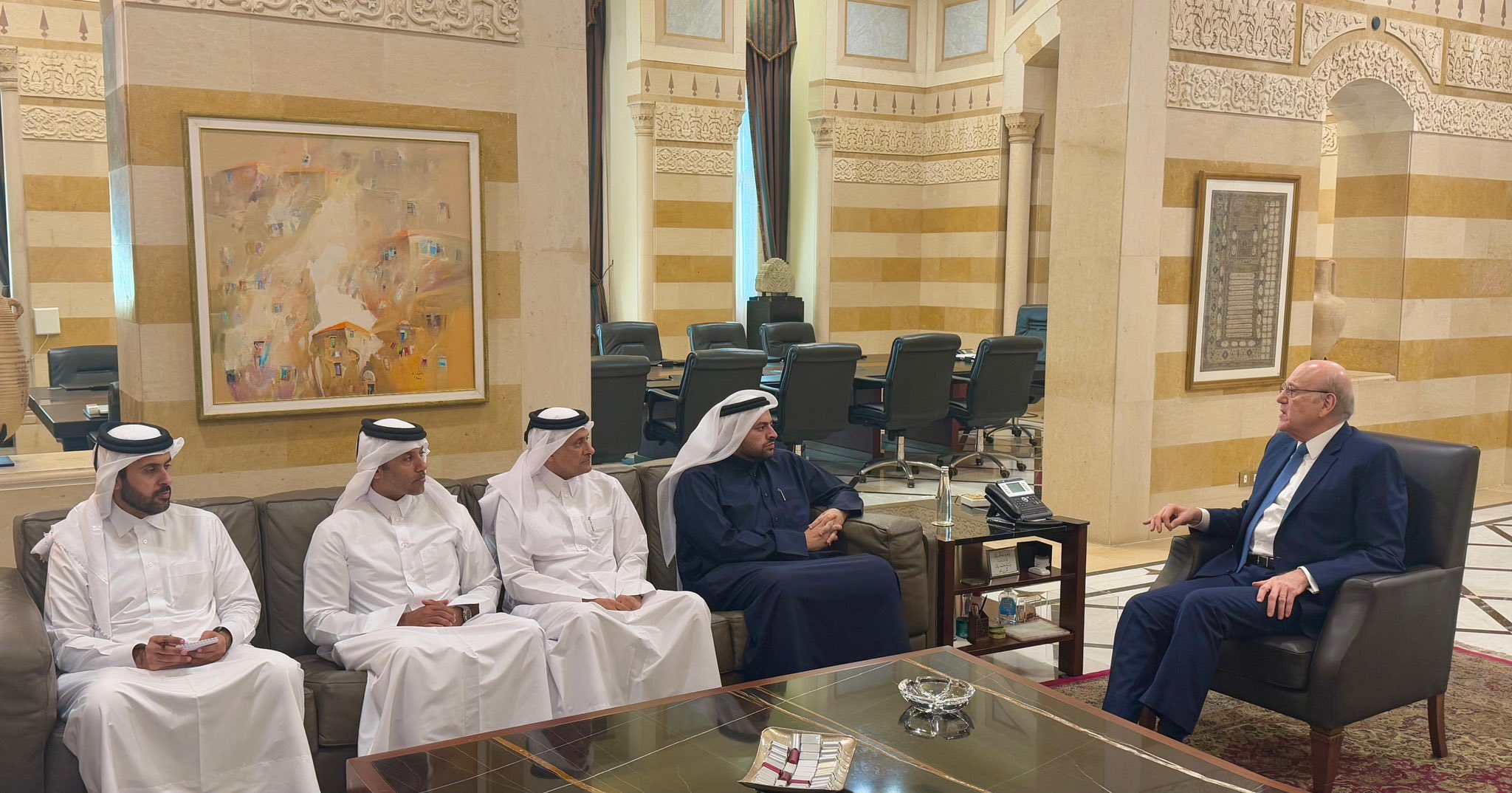The World Cup is set to mark a new era of accessibility in Qatar, which fans with disability needs are hoping will catch on in future mega sporting events worldwide.
A decade ago, Ahmed Habib didn’t know that one day he would be able to cheer for his favourite football team in person during the World Cup. This year, he will be able to attend the iconic tournament through one of Qatar’s eight fully-accessible World Cup venues.
Habib, who has a physical disability, is currently working as a Senior English Language Content Specialist at the Supreme Committee for Delivery & Legacy, to deliver the region’s first-ever World Cup. For him and many others, the global showpiece tournament brings more than just a football spirit, but a change that will forever impact the lives of many residing in Qatar.
“It’s a magical moment, I think for millions of people, and for it to be coming to the Arab world is something that’s really extra special for all of us here,” Habib told Doha News while visiting one of the World Cup venues, Education City (EC) Stadium.
“But really the story that we should be telling is how the World Cup has been transformative in making a lot more accessible on a wider scale.”
Qatar was awarded the opportunity to host the region’s first-ever FIFA World Cup in 2010. Bringing such a mega-event to the Middle East meant more than just flaunting the region’s football spirit, but also sharing its rich and unique cultures and traditions through its people’s own narrative. From that moment, a pledge was made by the Supreme Committee for Delivery & Legacy to make the World Cup accessible to everyone, and EC stadium host Qatar Foundation has made sure the country reaches its end of the bargain.
The most accessible World Cup yet?
It takes more than merely assigning accessible seats at a venue to deliver an accessible event. In the case of the World Cup, the responsibility starts from the moment one begins making their way to the stadium.
Meeting the needs of every person, regardless of their (dis/in)abilities, and removing as many obstacles as possible is imperative to better equip access to physical, digital and informational spaces.
For a nation where accessibility hasn’t previously been prioritised, hosting such a mega-tournament means a new infrastructure needs to be implemented to allow full accessibility. Because of this, Qatar has undergone significant modifications in the last decade to deliver on its pledge. This includes building state-of-the-art and fully accessible venues, training teams on accessibility assistance, and ensuring roads are fully built to meet all the visitors’ specific needs.
Such initiatives have made changes to the lives of the disabled community in Qatar, such as an easier use of Qatar’s new public transportation system.
“The World Cup has been a transformative point in making Qatar more accessible to disabled people. From the very beginning, accessibility has been at the forefront of the design process, and this is something that we now can see across different sectors of society, including transportation, accommodation, cultural sites and walking around the city,” Habib said.
QF has also since mobilised enormous efforts to guarantee the success of the tournament and provide an exceptional experience for all football fans attending the games.
Their plans started by holding multiple accessibility reviews to better understand the needs of all disabled people and how to provide the most inclusive services, Nihal Mohammed, Programme Manager at Earthna (Centre for Sustainable Future), told Doha News.
“We have prioritised the major [reviews], mainly to ensure that the fan journey to the stadium is a comfortable one and ensure that people with accessibility needs are supported, whether it be through providing them with the preferred path for people with specific ability needs, or audiovisual, spectrum, and physical needs,” Mohammed explained.
“We also have created a fan engagement plan for our activations along The Last Mile [the route people take from transport hubs to the stadium] to ensure that all the activations are accessible and that they are inclusive in their nature and support everyone in having a really enjoyable fan experience.”
This has not been an easy process. An important part of planning for QF has been understanding the huge range of different needs from an accessibility standpoint. “It’s not one size fits all,” Brooke Reid, Manager of Engagement and Activation – EC Open Spaces at QF, told Doha News.
“There is not one answer for one person or one particular condition,” she said.
“Someone who’s visually impaired has a range, they have a spectrum. [The solution for them] doesn’t suit every person who’s visually impaired and they may have other requirements as well. There is that vast range of needs and a huge range of spectators.”
For this reason, Qatar Foundation has been working with the Supreme Committee and Q22 to construct the appropriate spaces for people with disabilities to make their way from the Metro to the Education City stadium. This includes incorporating top-tier technology to help navigate the roads, placing accessible pedestrian signals, and deploying trained people for help, if needed.

“Getting to the stadium now means using a fully accessible Metro system. It means using accessible buses and taxis. So much work has been put not only into the stadiums but into The Last Mile and the fan zones that are going to be used,” Habib explained.
“It’s going to be a super accessible tournament, one of the most accessible in the world, not only for people like myself who use wheelchairs but also for folks who are blind or partially blind, for people who are neurodivergent, people on the autism spectrum, folks who are deaf. It’s going to be inclusive of everyone.”
Volunteers: the heart of the tournament
Qatar Foundation has deployed a team of trained specialists and accessible volunteers to support the FIFA World Cup Qatar 2022 Volunteer Programme.
The volunteers, who were picked through a rigorous process, received mandatory FIFA core training, in addition to training on accessibility and inclusivity. Such an initiative aims to create a welcoming environment for differently-abled football fans visiting during the much-awaited tournament.
“When people arrive from transport hubs, they’re coming from the Metro, they’re taking the bus and they’re making their way to the stadium and Education City. So, [we’re] providing them with accessibility volunteers to support that journey,” Reid said.
A comforting experience for those on the spectrum
QF’s efforts extend beyond the stadium’s gates. The EC Stadium, which is set to host matches up to the quarter-finals stage, includes a brand-new sensory room, along with two other World Cup venues.
“There has always been a discussion about how to make the world of football more accessible, especially the tournament here in Qatar. We are very proud that Education City Stadium has the first accessible room for people on the spectrum,” Mohammed said.
Located in one of the venue’s sky boxes, the room allows fans to watch live football in a specially illuminated area designed to reduce any nervousness they might experience while attending the game. It aims to provide those with cognitive disabilities with a fun match-day experience in a welcoming environment with soft furnishings, toys and other tools.
“[It] has been fitted out with multiple sensory tools and equipment that will help, all the fans requiring sensory regulation to enjoy watching the World Cup from a comfortable space that will not overwhelm them.”
A brighter, more accessible future for sports
The inclusivity of accessibility when hosting mega-events like the World Cup echoes an impact that reverberates beyond sports. It creates a real change in the way people perceive those with disabilities, Habib explains.
“When you create accessible societies, you see more disabled people on the screen. You see more disabled people in different spaces, which of course forces people to start rethinking the way in which they perceive disabled people,” noting that the standards set at the Qatar World Cup are likely to be reflected at future global sporting events.
“The introduction of sensory rooms at several stadiums, the use of audio, descriptive commentary in the Arabic language for the first time– all of these initiatives have really reshaped the way mega sporting events are delivered to disabled communities,” Habib told Doha News.
Echoing his sentiments, Mohammed added that there is a movement towards making everything more accessible in today’s world.
“I think there is a lovely spirit that we feel right now within the World Cup with people wanting to be more supportive and wanting to find ways to be more inclusive to people with alternative abilities,” she said.
“It’s not about ticking the box at the end of the day, but it’s about a journey that we have started, and we hope that it catches on worldwide.”







